
Bifocals: A Comprehensive Guide to Choosing the Right Pair
Posted by Team Debby on 8th Apr 2024
Bifocals: A Comprehensive Guide to Choosing the Right Pair
Bifocals represent a significant advancement in eyewear technology, offering a convenient solution for individuals experiencing vision difficulties at multiple distances.
Originally invented by Benjamin Franklin in the 18th century, bifocals have undergone continuous development, resulting in various types of bifocal lenses to suit different needs. These lenses not only accommodate individuals with presbyopia, but also those who require correction for both near and far vision.

The effectiveness of bifocals lies in their unique design, which typically features two separate optical zones.
The top portion of the lens corrects distance vision, while the bottom segment targets near vision, enabling the wearer to switch focus seamlessly between the two.
Alongside traditional bifocals, progressive lenses have emerged as an alternative that provides a more gradual transition between the distinct prescription zones.
However, choosing the right bifocals depends on various factors, including personal preferences and specific vision needs.
Key Takeaways
- Bifocals offer a solution for people with vision difficulties at multiple distances
- Various types of bifocal lenses have been developed over time to cater to different needs
- Selecting the appropriate bifocals depends on personal preferences and individual vision requirements.
History of Bifocals
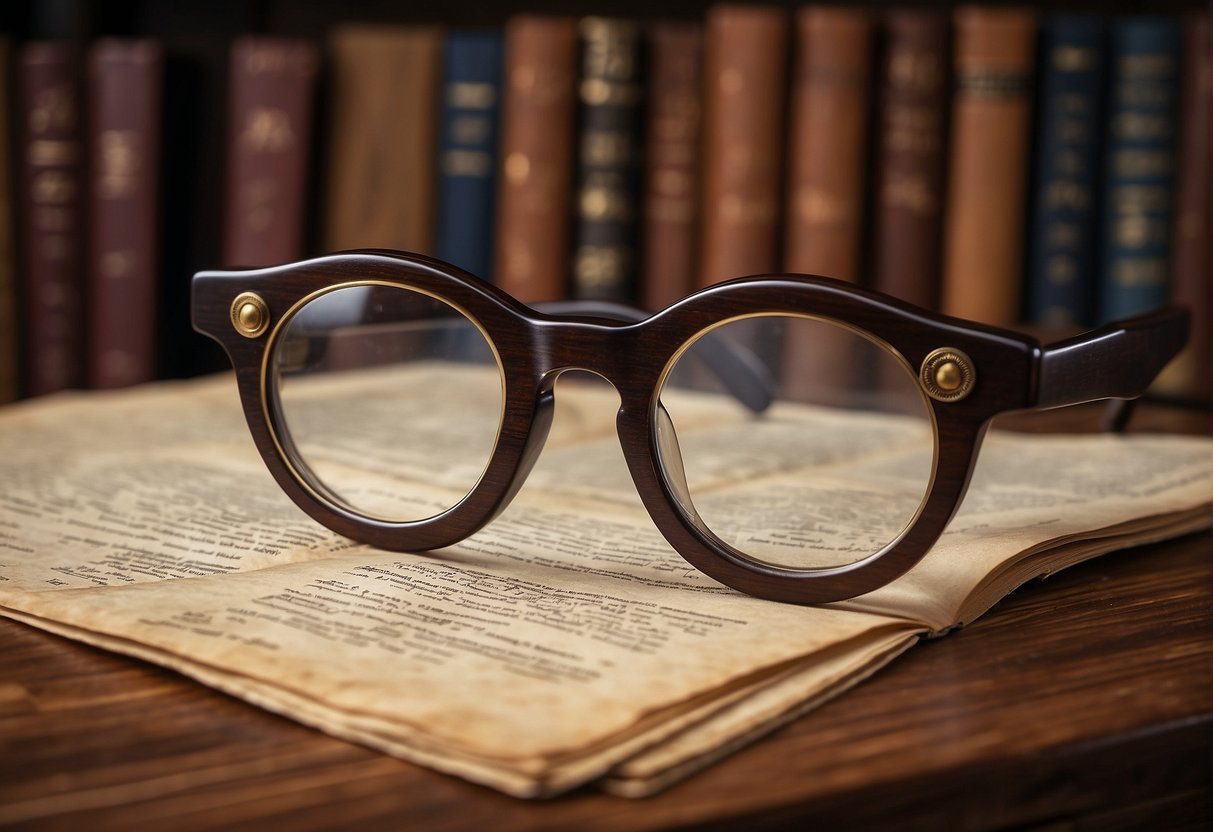
Benjamin Franklin's Contribution
We cannot discuss the history of bifocals without mentioning Benjamin Franklin, who is widely credited with inventing them.
Franklin, a notable figure in American history, was a polymath who contributed to various fields such as science, literature, and politics. He was motivated to create bifocals due to his own need for two different types of glasses - one for reading and another for distance vision.
It is believed that Franklin came up with the idea for bifocals around the year 1784. He devised a simple yet effective solution to his problem by cutting two lenses in half and combining them into a single frame, with a flat-top or round segment for reading at the bottom half, and a distance segment on the top half.
Evolution Over Time
Since Franklin's initial invention, bifocals have undergone several improvements in both design and materials.
In the 19th century, bifocal lenses were predominantly made from fragile glass. However, the invention of plastic lenses in the early 20th century significantly improved the durability and comfort of bifocals.
Some key advancements in bifocal designs include:
- Executive Bifocals: Invented in the 1940s, this lens style features a distinct horizontal line that separates the reading and distance segments, providing a wider field of vision for both disciplines.
- Progressive Lenses: Introduced in the 1950s, these lenses eliminate the visible line between the two vision correction segments, providing a seamless transition from distance to near vision.
Modern bifocals offer various other features:
- Materials: Bifocal lenses now come in various materials like plastic, polycarbonate, and high index, catering to the wearer’s preferences and needs.
- Coatings: Lenses can now be treated with anti-reflective coatings to minimize glare, as well as scratch-resistant and UV protection coatings, to enhance durability and protection.
- Frame Styles: Today's bifocal lenses can be incorporated into a multitude of frame styles, materials, and sizes, ensuring that individuals can find a pair that complements their personal style. Debspecs has several offerings of rimless bifocal readers available.
As we've explored, bifocals have a rich history that can be traced back to Benjamin Franklin's practical invention in 1784. Since then, they have evolved dramatically to keep up with technological advancements and improvements in materials. With these developments, bifocals continue to be a popular and versatile solution for individuals with both reading and distance vision needs.
Types of Bifocals
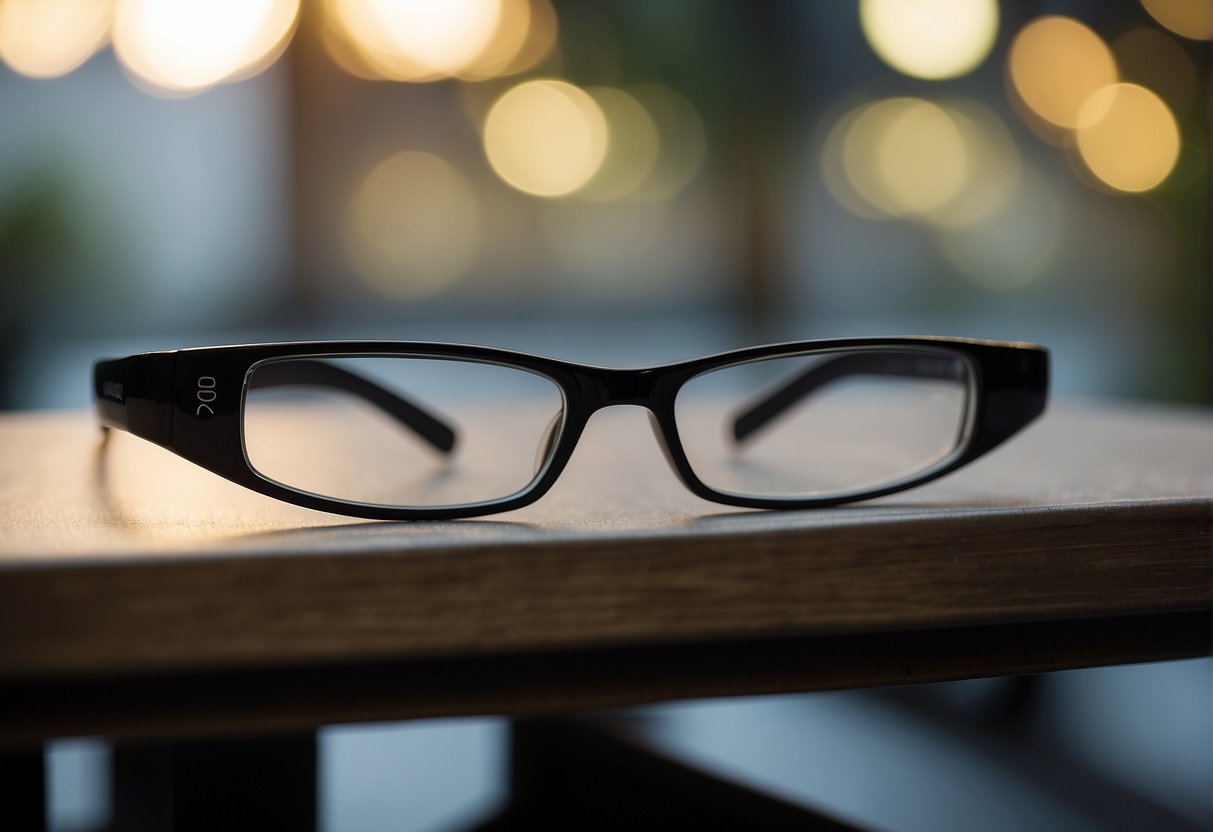
Lined Bifocals
Lined bifocals are the traditional type of bifocal lenses. They have a distinct separation between the two focal areas with a visible line.
The top part of the lens focuses on distance, while the bottom part focuses on near vision. We can typically find them in two main shapes:
- Flat-top or D-shape (most common)
- Round
Despite their functionality, some people may find the visible line unattractive or distracting.
No Line Bifocals
No line bifocals, also known as bifocals without lines or simply no line lenses, provide a more seamless appearance. As the name suggests, they don't have the visible line found in lined bifocals. This makes them more aesthetically pleasing and preferred by those who don't want a clear demarcation between the two focal areas on their lenses. However, no line bifocals can be slightly more challenging to adapt to, as the transition between both viewing areas is gradual.
Clear On Top Bifocals
Clear on top bifocals, sometimes referred to as "stick-on bifocals," have an interesting characteristic: they are removable and can be placed on top of your existing lenses.
This type can be convenient for those who need a temporary solution for reading or near vision tasks. Although they may not be as stable as traditional bifocals, they can be an economical and flexible option.
Progressive Bifocals
Progressive bifocals, often called progressive lenses or no-line bifocals vs progressive lenses, offer the most seamless and gradual transition between the different distance viewing areas.
Unlike other types of bifocals, progressive lenses don't have a distinct line or separation. Instead, the power of the lens changes gradually from distance to intermediate and near vision. The lack of an abrupt transition between focal areas minimizes image distortions when switching distances.
In terms of appearance, progressive bifocals are much more similar to no line bifocals. However, the viewing areas and the transitions are more complex in progressive lenses, providing a smoother experience for the wearer.
As we can see, there are various types of bifocals available to suit different preferences and needs. Be it the traditional lined bifocals, the more discreet no line bifocals, the versatile clear on top bifocals, or the advanced progressive bifocals, each type has its unique features and advantages.
How Bifocals Work
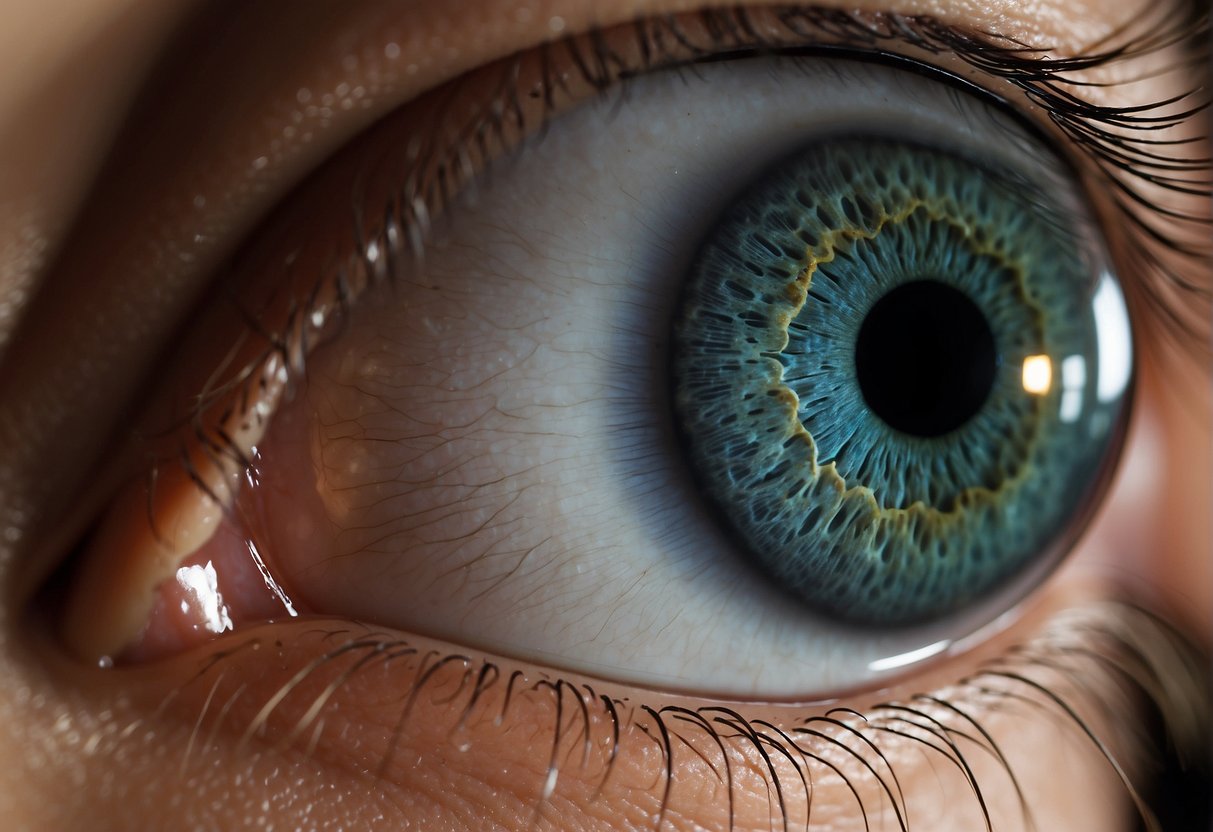
Bifocals are a type of eyeglasses designed to help individuals who have difficulty focusing on both near and far objects. In this section, we'll discuss how bifocals work, what they look like, and the purpose they serve.
Bifocal lenses consist of two distinct optical powers combined within a single lens.
The upper portion of the lens caters to distance vision, while the lower portion is responsible for near vision. To switch between the two, the wearer simply needs to look through the appropriate section of the lens.
For instance, when looking into the distance, one would look through the upper portion of the lens. Conversely, when reading a book or looking at something up close, one would look through the lower portion.
Bifocals come in various designs, but the most common type features a distinct line separating the two sections of the lens.
The top section is generally larger and resembles the shape of a regular eyeglass lens, while the bottom section is smaller, often taking the shape of a D or a half-moon called the segment. Here's an outline of a typical bifocal lens:
<p><img src="/product_images/uploaded_images/bifocal-explanation.png"></p>
The primary function of bifocals is to address presbyopia, a natural age-related loss of focusing ability.
As we age, the lens of the eye loses its flexibility, making it more difficult to focus on near objects. Bifocals allow the wearer to seamlessly switch between near and distance vision without the need for multiple pairs of glasses or squinting.
In conclusion, bifocals provide a convenient solution for those struggling with both near and far vision. Their distinct design and cleverly combined optical powers enable individuals to see clearly and comfortably at various distances.
Bifocals vs Progressive Lenses
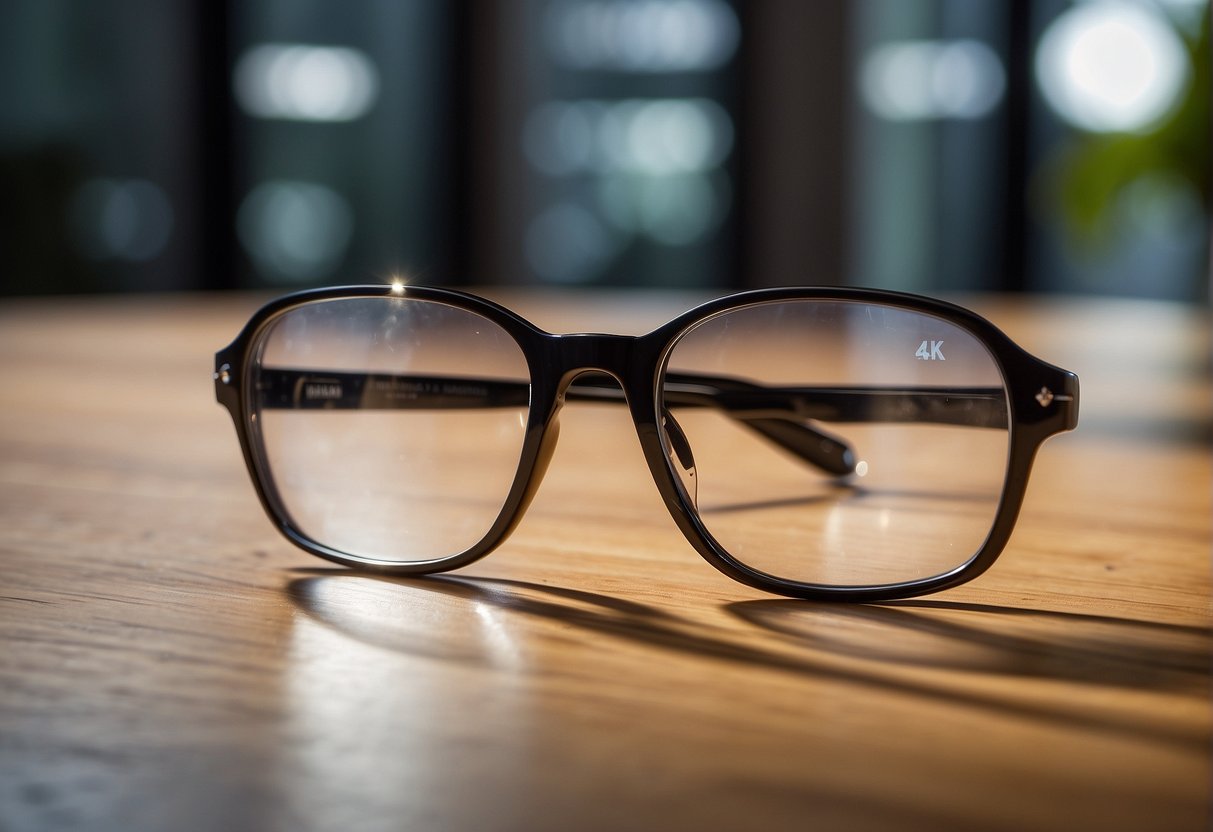
Visual Comparison
When comparing bifocals and progressive lenses, a notable visual difference between the two types of lenses becomes apparent.
Bifocals have a visible line that separates the distance and reading sections of the lens. On the other hand, progressive lenses, also known as no-line bifocals, seamlessly blend the distance and reading areas without a visible line.
Table 1: Visual Comparison
| Bifocals | Progressive Lenses |
|---|---|
| Visible line separating lens sections | Seamless transition between lens sections, no visible line |
| Two distinct viewing areas | Multiple viewing areas |
Functional Differences
We can also compare functional differences between bifocals and progressive lenses to help make an informed decision:
- Viewing Areas: Bifocals have two distinct viewing areas - one for distance and another for near vision. Progressive lenses, however, offer an additional intermediate area between the distance and reading zones, providing a more natural and gradual change in vision.
- Adaptation: Bifocals require some adaptation, as wearers need to figure out the optimal head angle to view objects at different distances. Progressive lenses present a smoother transition, allowing for easier adaptation and more comfortable viewing.
- Aesthetics: Some people prefer progressive lenses for their aesthetics, as they don't have the visible line that bifocals have. This gives them a more modern and sleek appearance.
In summary, both bifocals and progressive lenses serve the purpose of correcting presbyopia.
Bifocals offer a simple and functional solution with two distinct viewing areas, while progressive lenses provide a more seamless and gradual transition with multiple viewing zones. The choice between the two ultimately depends on the wearer's personal preferences and needs.
Choosing the Right Bifocals

Bifocals offer a practical solution by having both your distance and reading prescriptions within a single pair of glasses.
When selecting the right bifocals, you should consider your specific needs and preferences concerning prescription, non-prescription options, and additional features such as safety and sun protection.
In this section, we will guide you through these considerations.
Prescription Bifocals
First and foremost, consult with your optometrist to obtain an accurate prescription tailored to your needs. Here's what you should consider:
- Lens Type: Bifocal lenses can be either lined (with a visible horizontal line) or progressive (no visible line). Discuss the pros and cons of each type with your optometrist.
- Materials: Modern lenses are made of various materials with different benefits. These include:
- Polycarbonate - Lightweight, impact-resistant, and ideal for safety glasses with bifocals.
- High-Index - Thin and light, excellent for strong prescriptions.
- Glass - Optically sharp, but heavy and less impact-resistant.
Non-Prescription Bifocals
Non-prescription bifocals, also known as reading glasses with bifocals, are suitable for those who require reading assistance and have no issues with distance vision. Some options include:
- Reader Bifocals: Glasses with a reading segment and clear lenses on top.
- Full Reading Glasses: Glasses with the same reading power throughout the lens.
You can find cheap bifocals and reading glasses online. However, make sure that the lens quality and frame design meet your comfort and durability needs.
Safety and Sunglasses Options
Protecting your eyes while performing certain tasks or being exposed to the sun is crucial. Here are some options to cater to these needs while incorporating bifocals:
- Safety Glasses with Bifocals: Designed with impact-resistant lenses and sturdy frames for optimal protection in environments that require eye protection.
- Sunglasses with Bifocals: Ideal for outdoor enthusiasts who need reading assistance. These glasses provide sun protection and come in both prescription and non-prescription options.
- Contacts with Bifocals: An alternative to glasses, bifocal contact lenses offer the convenience of not needing to switch between different glasses or use clip-on sunglasses. Consult your optometrist to find the best fit and type.
Advancements in Bifocal Technology
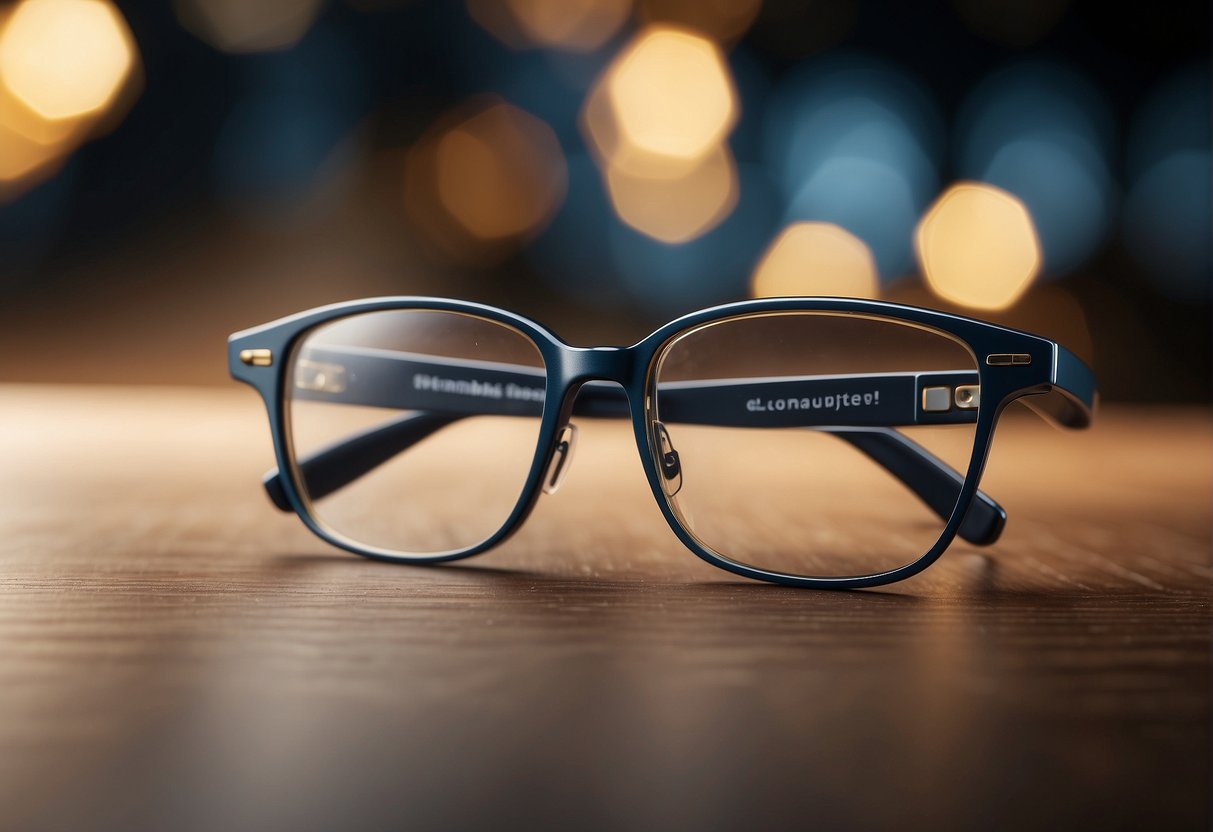
Bifocals are essential for people who require two different types of vision correction for near and distance vision. They enable us to avoid carrying multiple pairs of glasses and make our day-to-day activities more comfortable and convenient. In this section, we will explore the recent advancements in bifocal technology, focusing on material innovations and design improvements.
Material Innovations
The development of cutting-edge materials has vastly improved the wearability, comfort, and durability of bifocals. Some innovations include:
- Polycarbonate lenses: This material is lightweight, durable, and resistant to impact, making it ideal for active individuals and children. Polycarbonate lenses also offer high optical clarity, ensuring that we can see our surroundings with sharp focus.
- High-index lenses: These lenses are thinner and lighter than traditional glass or plastic lenses, yet provide the same degree of vision correction. This innovation has made bifocal glasses more comfortable to wear and aesthetically appealing.
- Photochromic lenses: Also known as "transition lenses," these lenses automatically adjust their tint according to the level of sunlight, providing optimal comfort and glare protection. With this feature, we don't have to switch between regular bifocals and sunglasses when going outdoors.
Design Improvements
Alongside material advancements, we have also witnessed significant design improvements in bifocal technology, including:
- Progressive lenses: Unlike traditional bifocals with a visible dividing line, progressive lenses offer a smooth transition between near and far vision. This seamless transition minimizes the “image jump” some people experience when switching between the two zones of focus. Progressive lenses also have a more modern, stylish look, as they lack the visible line associated with conventional bifocals.
- Custom bifocals: As technology continues to improve, so does our ability to create custom bifocal lenses tailored to our specific vision needs. These personalized lenses provide optimal vision correction and better image contrast, enhancing our overall visual experience.
Frequently Asked Questions

Who is credited with inventing bifocal eyeglasses?
Benjamin Franklin, an American inventor, polymath, and statesman, is credited with inventing the bifocal eyeglasses around the 1780s. He designed these glasses to address the challenges he faced while switching between his reading and distance glasses, thus creating a single lens that combined two different prescriptions.
How do bifocals differ from progressive lenses?
Bifocals have two distinct areas for vision - the top part for seeing at a distance and the bottom part for reading or near tasks. They feature a clear dividing line between the two prescriptions. In contrast, progressive lenses offer a graduation of multiple prescriptions in a single lens, including distance, intermediate, and reading prescriptions, without any visible lines or segments.
For what purpose are bifocal lenses primarily used?
Bifocal lenses are primarily used to correct presbyopia, an age-related vision condition that affects the ability to focus on near objects. They help individuals in their daily life by enabling them to read and see clearly at a distance without the need to switch between different glasses.
What are the common drawbacks of wearing bifocals?
Some common drawbacks of wearing bifocals include:
- The visible dividing line between the two lens segments, which some people find aesthetically unappealing.
- The sudden jump in focus while looking through different parts of the lens, leading to a brief period of visual adaptation.
- Difficulty with intermediate distances, as bifocals only offer two prescriptions.
How are vision defects corrected using bifocal lenses?
Bifocal lenses correct vision defects by combining two different prescriptions in a single lens. The top part of the lens is designed to correct distance vision and addresses defects like nearsightedness or farsightedness. The bottom part of the lens provides the magnification needed for reading and near tasks, addressing presbyopia or other issues with near vision.
What factors determine the price range for bifocal glasses?
The price range for bifocal glasses can be influenced by various factors.
- One factor is the material used for the lenses. For example, glass, plastic, or polycarbonate.
- Another factor is the type and complexity of the lens design.
- Then, the frame material and design also play a role in determining the price.
- Additional lens treatments, such as anti-reflective coatings or photochromic lenses, can also affect the price.
- Lastly, the location and reputation of the eyewear provider also influence the price range.
Remember, higher prices do not always guarantee better quality. So, it's essential to consider your individual needs and consult with an eye care professional to find suitable bifocal glasses.


